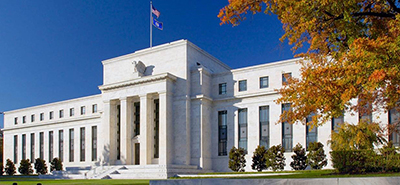
Fed Sets Stage for March Rate Hike

The Federal Open Market Committee did not pull trigger on an increase to the federal funds rate last week—but it left little doubt about action at its next policy meeting in March.
The FOMC concluded its scheduled two-day policy meeting yesterday amid widespread anticipation that it will likely authorize at least three hikes to the federal funds rate (currently at 0-0.25 percent) later this year.
“With inflation well above 2 percent and a strong labor market, the Committee expects it will soon be appropriate to raise the target range for the federal funds rate,” the Fed statement said.
Mike Fratantoni, Chief Economist with the Mortgage Bankers Association, said the stage is now set for the first rate hike, most likely at the next scheduled FOMC meeting Mar.
“Today’s clear signal from the Federal Reserve that they will hike rates in March was no surprise, given the strong job market and inflation well above the 2% target,” Fratantoni said. “Similarly, the Fed’s move to quickly end any further growth to their balance sheet, thereby reducing accommodation at the longer end of the yield curve, also makes sense given the evolution of the economy.”
Fratantoni said the news today was the Fed’s release of principles regarding how it will think about moving from their current nearly $9 trillion balance sheet to a smaller portfolio over time.
“While the experience shrinking the balance sheet in the last cycle was instructive, we do expect that the Fed will move to begin allowing runoff more quickly this time and at a faster pace once it starts,” Fratantoni said. “The principle that they would like to return to a balance sheet that is primarily Treasuries at some point hints at some additional pressure on MBS yields over the medium term.
Fratantoni said MBA is holding to its forecast that the combination of a stronger economy, persistent inflation and the reduction of monetary policy accommodation will all push towards somewhat higher mortgage rates, with the 30-year fixed rate hitting 4% by the end of 2022.
“Unless the economy comes completely off the rails between now and the next FOMC meeting on March 16, we think the Committee will announce a 25 bp hike in its target range for the fed fund rate at that meeting,” said Jay Bryson, Chief Economist with Wells Fargo Economics, Charlotte, N.C. “Furthermore, we look for the FOMC to hike rates by 25 bps per quarter through the second half of next year. In sum, we forecast that the FOMC will lift its target range for the fed funds rate to 1.75% to 2.00% by Q3-2023.”
The full FOMC statement appears below:
“Indicators of economic activity and employment have continued to strengthen. The sectors most adversely affected by the pandemic have improved in recent months but are being affected by the recent sharp rise in COVID-19 cases. Job gains have been solid in recent months, and the unemployment rate has declined substantially. Supply and demand imbalances related to the pandemic and the reopening of the economy have continued to contribute to elevated levels of inflation. Overall financial conditions remain accommodative, in part reflecting policy measures to support the economy and the flow of credit to U.S. households and businesses.
“The path of the economy continues to depend on the course of the virus. Progress on vaccinations and an easing of supply constraints are expected to support continued gains in economic activity and employment as well as a reduction in inflation. Risks to the economic outlook remain, including from new variants of the virus.
“The Committee seeks to achieve maximum employment and inflation at the rate of 2 percent over the longer run. In support of these goals, the Committee decided to keep the target range for the federal funds rate at 0 to 1/4 percent. With inflation well above 2 percent and a strong labor market, the Committee expects it will soon be appropriate to raise the target range for the federal funds rate. The Committee decided to continue to reduce the monthly pace of its net asset purchases, bringing them to an end in early March. Beginning in February, the Committee will increase its holdings of Treasury securities by at least $20 billion per month and of agency mortgage‑backed securities by at least $10 billion per month. The Federal Reserve’s ongoing purchases and holdings of securities will continue to foster smooth market functioning and accommodative financial conditions, thereby supporting the flow of credit to households and businesses.
“In assessing the appropriate stance of monetary policy, the Committee will continue to monitor the implications of incoming information for the economic outlook. The Committee would be prepared to adjust the stance of monetary policy as appropriate if risks emerge that could impede the attainment of the Committee’s goals. The Committee’s assessments will take into account a wide range of information, including readings on public health, labor market conditions, inflation pressures and inflation expectations, and financial and international developments.
“Voting for the monetary policy action were Jerome H. Powell, Chair; John C. Williams, Vice Chair; Michelle W. Bowman; Lael Brainard; James Bullard; Esther L. George; Patrick Harker; Loretta J. Mester; and Christopher J. Waller. Patrick Harker voted as an alternate member at this meeting.”
